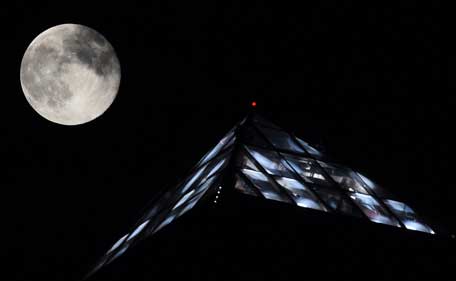- City Fajr Shuruq Duhr Asr Magrib Isha
- Dubai 04:25 05:43 12:19 15:46 18:50 20:09
As the annual Perseid Meteor Shower reached its peak last night, the Dubai Astronomy Group (DAG) held an exclusive event at its Al Zubair Camp in Sharjah to watch the night sky erupt in a haze of shooting stars and some possible ‘fireballs’.
The Perseid Meteor Shower, which peaks annually on August 12 according to the DAG, occurs when the Earth passes through the debris zone left by Comet Swift–Tuttle.
Speaking to Emirates 24|7, Hasan Ahmad Al Harriri, CEO of DAG explained further: “The Perseid Meteor Shower is one of the most spectacular events of the year, visible in the first few weeks of August but peaking annually on the twelfth of the month.
“During this time, people can witness up to 100 shooting stars per hour, and sometimes even significant sized fireballs streaking through the night sky when large dust particles burn in the upper atmosphere.”
Al Harriri continued: “This is why we are inviting enthusiasts to Al Zubair Camp on Tuesday evening, between 8pm and 11pm to come and watch the celestial splendour. Those who want to venture out on their own should get out of the city for better viewing. The only spoiler that could dampen the evening is the moon.”
This year’s peak of the Perseid Meteor Shower is coinciding with the Supermoon that brightened up the night sky on Sunday evening.
“The Supermoon occurs when it is the closest to the Earth,” Al Harriri stated. “However, with the bright light of the moon, it will prove very difficult to see the meteor shower in all its glory.”
Ibrahim Abdelrahman Al-Jarwan from Sharjah Planetarium agreed with the observation, saying: “The sighting of the Perseid Meteors was probably better in the first week of August, before the Supermoon itself, even though the shower was yet to reach its peak.
“This doesn’t mean you won’t see the meteor shower at all, just that it could be limited to 5-10 per hour instead of 10 times more. However, those who are interested could try seeing it between the hours of midnight and an hour before sunset, when the night sky is the darkest.”
Playing further havoc to the celestial event is the possibility of convective cloud over the next 24 hours in the western parts, according to the National Centre of Meteorology and Seismology.
Al Harriri and Al-Jarwan both alluded to ‘Al Roayeh’ or the convective cloud cover that occurs during the month of August, filled with precipitation as the humidity levels rise across the country.
Al-Jarwan added: “Star gazers need not fret if they do miss out on the meteor shower this month, because October will also serve up the opportunity to catch the Orion meteor shower, followed by the Leonide and Gemini from mid-November to December. There are more celestial wonders to observe in the coming months.”
Supermoon, UAE
The much-awaited ‘Supermoon’ dawned over the UAE last night, but left star-gazers underwhelmed in terms of it appearing “huge”.
The Supermoon was, however, a dazzling bright white that was stunning more for its intensity than its size. “It just seemed like it was shining much, much brighter,” says Ankita Pal, a Dubai resident and Emirates 24|7 reader.

A supermoon rises behind the light on top of the Luxor Hotel and Casino on August 10, 2014 in Las Vegas, Nevada. In the second supermoon or perigee moon as it is also known of the summer, the moon appears 30 percent brighter and 14 percent bigger than normal. (AFP)
“It was not as large and ‘red’ as expected,” says Anjali John, another star-gazer who had her eyes on the sky for most of the evening after sunset. “There was this super-shiny milky brightness,” she says.
 Emirates 24|7 staffer Ajanta Paul captures the Supermoon last night.
Emirates 24|7 staffer Ajanta Paul captures the Supermoon last night.
In comparison to other full moons, supermoons can be up to 14 per cent closer and 30 per cent brighter, according to Nasa.
The August 2014 supermoon will become full during the same hour that the moon comes closest to the Earth (lunar perigee), meaning it will outshine other full moons that have fallen on the same day as the lunar perigee.
Video courtesy: Ajanta Paul
All the action tonight is up in the sky for sure.
Enjoy the show.
Click to see Supermoon: Best pics from around the world
![]() Follow Emirates 24|7 on Google News.
Follow Emirates 24|7 on Google News.